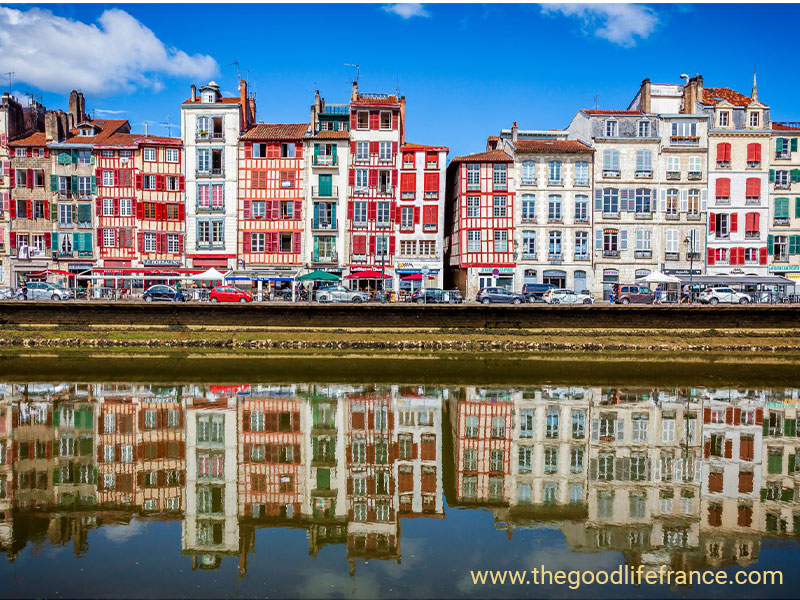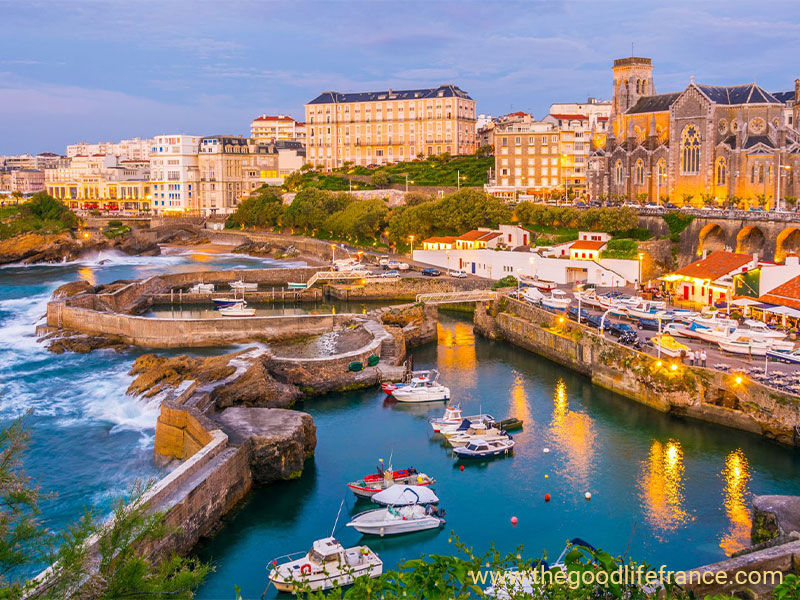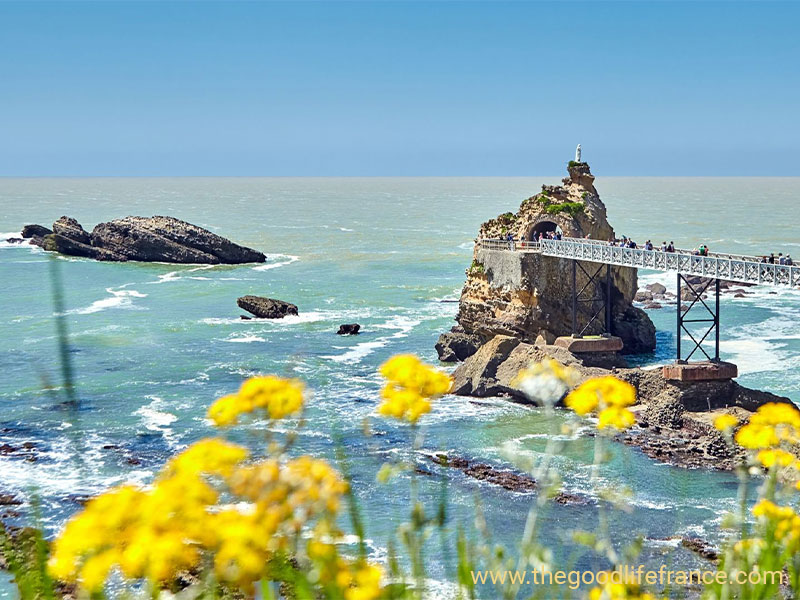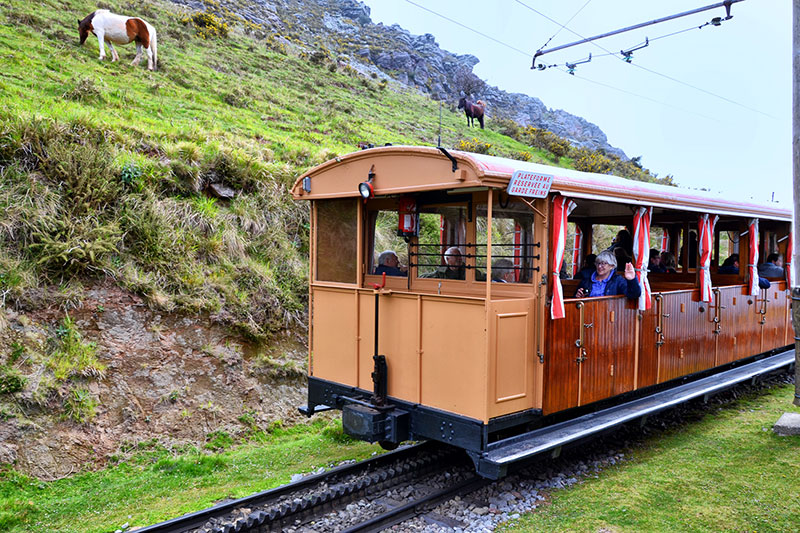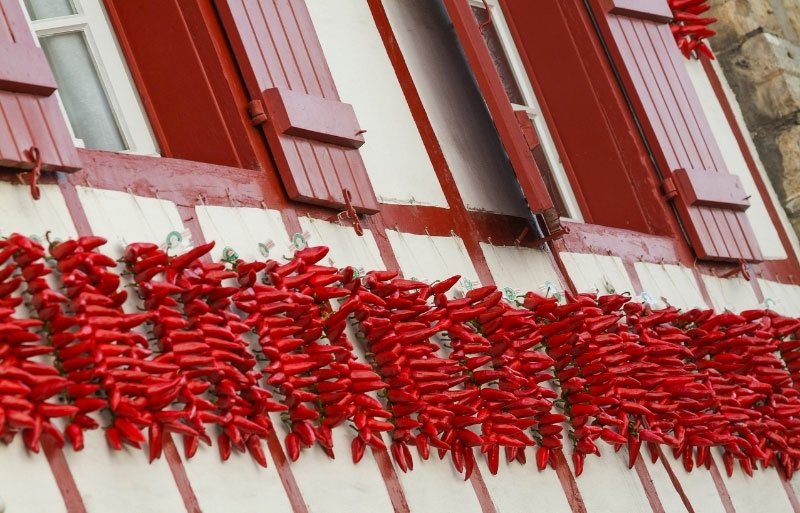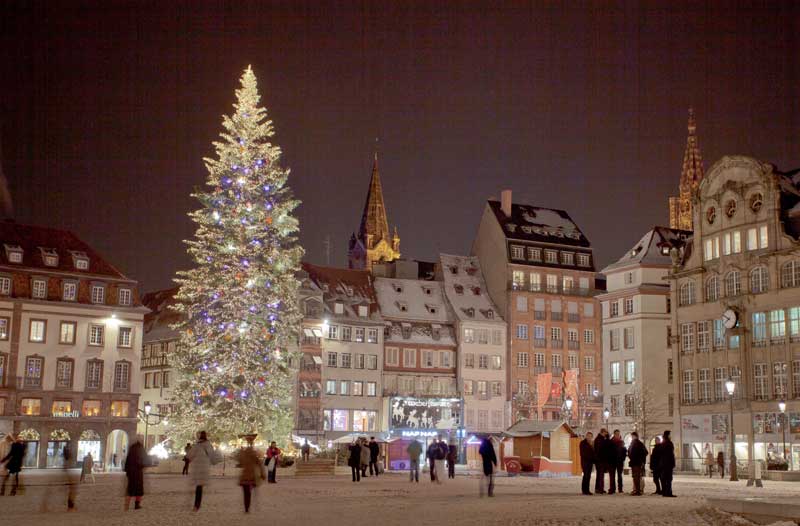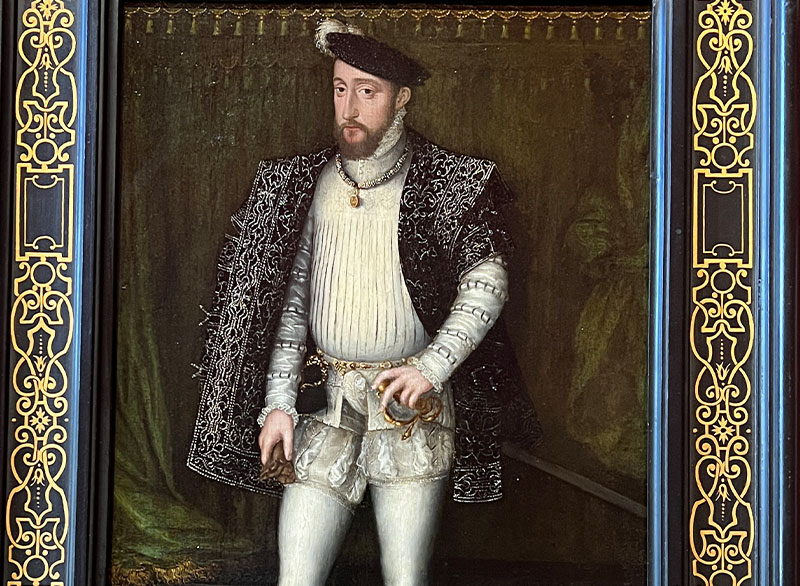Wherever you choose to holiday in France, there’s no escaping the blue, white and red of the French flag, patriotically displayed outside town halls and other civic buildings. But head to the far-southwest where the green foothills of the Pyrenees meet the rolling surf of the Atlantic and you’ll soon see that the Tricolore has competition. Gillian Thornton soaks up the vivid colours and vibrant culture of French Basque Country.
Basque colours
The vivid red and white flag of Basque Country celebrates the culture and lifestyle of an unofficial country within a country. Or to be entirely accurate, within two countries, for the seven historic provinces of Basque Country straddle the Pyrenean mountain range. The four largest ones lie in Spain, whilst the other three make up the western half of France’s Department 64, Pyrénées-Atlantiques. Historically, the provinces share customs, culture and even a common language, Euskara. Now widely taught in local schools it bears no resemblance at all to French, or indeed any other language.
Basque architecture is as distinctive as the language. Wooden timbers painted in traditional ox-blood red or forest green splash across whitewashed facades at every turn, giving a permanently upbeat feel to towns and villages, whatever the weather.
Biarritz
But there’s a grander side to the Pays Basque too in the Belle Epoque mansions of elegant Biarritz. Napoleon III and his wife Eugènie commissioned a sumptuous summer palace here on the seafront, now repurposed as the 5* Hôtel du Palais. And where the emperor went, the aristocracy of Europe followed, building flamboyant seaside villas of their own.
But in the 1950s, this chic seaside resort welcomed a new kind of clientele with the advent of Californian surf culture. Seventy years on, Biarritz still exudes this heady mix of period elegance and buzzing youth culture, and there are few nicer ways to soak it up than to walk the undulating promenade around the Grande Plage where surfers skilfully ride the waves towards the Casino.
My favourite coastal stroll leads south, past the old fishing port with its buzzing quayside restaurants and round the headland to the town’s excellent aquarium. Opposite the Art Deco façade, a high-level walkway leads over the waves to the emblematic statue of the Virgin on a rock, so walk on water to catch those sweeping views back across the Grande Plage to the lighthouse. Stop off for a meal or a drink at the Vieux Port then drop down to the Côtes des Basques, birthplace of surfing in France, for more surfboard action and views to La Rhune, highest point in the western Pyrenees.
But Biarritz isn’t the only gem on the French Basque Coast. Small resorts dot the sandy shoreline as you head towards Spain, but the must-see seaside town is Saint-Jean-de-Luz where Louis XIV married Maria Theresa of Spain in 1660 at the church of St John the Baptist, today located on the main shopping street.
If you’re searching for gifts, take a look at traditional striped Basque linens, buy a pair of local espadrilles, or maybe stock up at Maison Adam on scrumptious macaroons, first presented to Louis XIV before his wedding. His bride-to-be spent the eve of the ceremony at the pink-washed ‘Infanta House’ overlooking the busy fishing harbour.
Across the harbour in Ciboure stands the birthplace of composer Maurice Ravel who penned his famous Boléro in 1928 whilst on holiday in St-Jean-de-Luz.
Stunning beaches and beautiful Bayonne
North of Biarritz, the straight sandy shore of Anglet embraces a succession of well-serviced beaches such as Chambre d’Amour as far as the mouth of the Adour. A few kilometres upriver lies Bayonne (top photo), unofficial capital of French Basque Country and administratively linked with Biarritz and Anglet as B-A-B.
Immerse yourself in what it means to be Basque at the Basque Museum, housed in a former merchant’s house on the quayside. Explore the narrow streets of half-timbered houses in the cathedral quarter. And, on Saturday mornings, browse the street stalls that fringe the quaysides and bridges around the covered market.
For a true taste of the town, discover Bayonne’s two signature products, chocolate and ham. Chocolate first arrived in France in the 16th century via Jewish immigrants escaping the Spanish inquisition and there are many independent chocolate makers each with their own speciality. Look out too for producers of Bayonne’s famous cured ham, made from Basque Country pig meat that is cured and treated with local salt and with crushed pimentos from the nearby village of Espelette.
Tempting though it is to linger by the ocean, the lush green interior of French Basque Country is a must-see. Take the cog railway to the top of La Rhune for a seagull’s eye view of coast and countryside. Go underground at the Grottes de Sare and the Grottes d’Isturitz and Oxocelhaya for fabulous rock formations. And at Cambo-les-Bains, stroll through the glorious formal garden and sun-drenched rooms of Villa Arnaga, former home of Edmond Rostand, author of Cyrano de Bergerac.
Nearby Espelette is an extravaganza in red and white, not just in the architecture and flags, but in the ubiquitous strings of scarlet peppers that adorn houses, shop fronts, and restaurants. Along with Sare, Ainhoa and La Bastide-Clairance, Espelette is classified amongst the elite band of Plus Beaux Villages de France.
Basque sports
And wherever you stop, look out for a curious high single wall behind an open space, often in the village centre. This is a fronton, all that’s required for Basque Country’s signature game, pelota, played squash-style against the wall. Variations of the game – some of them played indoors – use a leather glove, wicker basket or even a bare hand to hit the ball in this high-octane sport.
But there’s a third sport that seems part of the Basque DNA. Several high profile rugby players hail from the region and a number of former internationals can be found running restaurants, bars and even clothing brands. Passions run high when the whistle blows and everyone is invited to join in the good-natured fun, so don’t even try to resist. Just go with the flow and soak up the atmosphere of this exciting and welcoming region.
By Gillian Thornton, one of the UK’s leading travel writers and a regular writer for The Good Life France Magazine and website.
More Basque articles
Take a slow tour through French Basque Country
The macarons of the Basque Country
How to make a Basque Gateau – a delicious and delicious regional cake
Want more France?
Discover more fabulous destinations in France with our free magazine The Good Life France
Love France? Have a listen to our podcast – everything you want to know about France and more!
All rights reserved. This article may not be published, broadcast, rewritten (including translated) or redistributed without written permission.
